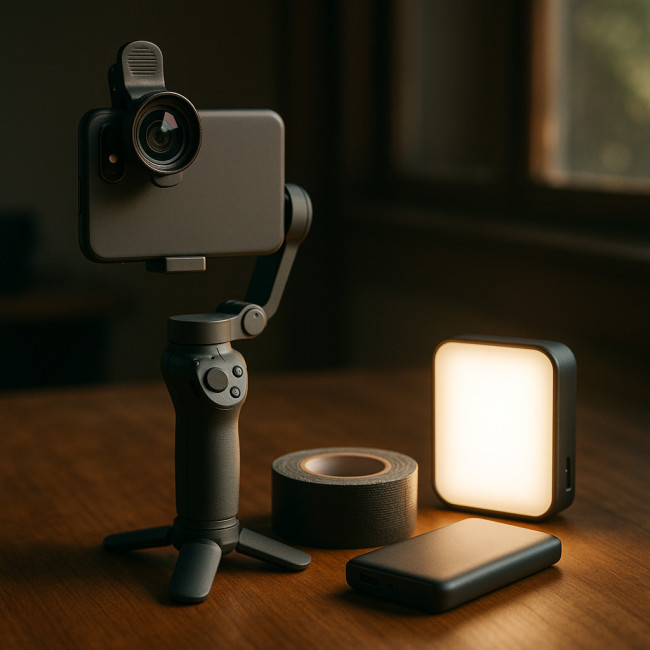Up-skilling budget: free and low-cost tools every new videographer should try
Starting a videography career can feel expensive, yet dozens of cost-effective resources speed up learning without draining your wallet. In this guide, you will discover the smartest free and low-cost tools for shooting, editing, sound, project management and marketing. You will also learn how to combine them into a sustainable growth plan that keeps clients impressed and cash flow healthy.
Why up-skill on a budget now?
The creator economy grows daily. Recruiters expect strong portfolios, fast turnaround and eco-aware workflows. Mastering affordable tools early helps you:
- Build a reel faster than competitors who wait to buy premium gear.
- Experiment freely without fearing costly mistakes.
- Offer flexible packages to clients with modest budgets.
Platforms such as Artfolio's videographer training hub confirm this trend: low-overhead creators land projects sooner, then reinvest profits into advanced equipment.
Shooting tools that cost under €100

Imagine unpacking your first lightweight kit: a recent smartphone locked into a foldable three-axis gimbal, a clip-on anamorphic lens flaring gentle blues, a USB-C LED panel taped to a recycled stand and a roll of gaffer ready for emergencies. The entire setup fits in a bicycle messenger bag, weighs less than a classic DSLR body and, crucially, costs under one hundred euros. This visual should remind every beginner that smart technique matters more than a loan-financed camera.
Smartphone stabilisers
A modern phone already shoots 4K. Add a three-axis gimbal like DJI OM SE (≈ €89) to remove shake and capture cinematic motion.
Lens clip-ons
Wide, macro and anamorphic clip-on lenses (Moment, Ulanzi) start at €40. They let you mimic pro glass while travelling light.
Lighting shortcuts
- Paper lanterns (≈ €12) diffuse harsh bulbs for interview setups.
- USB-C LED panels (≈ €35) mount on any phone rig and last two hours on power-banks.
Audio: clear sound without studio rates
Viewers forgive shaky footage, not bad audio. Prioritise microphones:
| Budget mic | Price | Best use | Upgrade path |
|---|---|---|---|
| Boya BY-MM1+ | €45 | On-camera vlogging | RØDE VideoMic NTG |
| Movo WMX-UHF | €79 | Wireless interviews | RØDE Wireless PRO |
| Tascam DR-05X | €95 | Room ambience | Zoom H5 |
Noise-reduction software
Pair those mics with Audacity (free) or iZotope RX Elements (often €29 during sales) to remove hums and clicks.
Editing suites that respect your wallet
DaVinci Resolve 18 (Free)
Color grading, Fairlight audio and Fusion VFX in one package. The learning curve steepens, but Blackmagic offers hundreds of official YouTube tutorials.
CapCut Desktop (Free)
Ideal for vertical or rapid-fire social edits. Auto-captions and stock libraries accelerate client deliverables.
Lightworks Create (€9.99/month)
If you prefer a traditional timeline and need ProRes export, Lightworks' entry tier remains unbeatable.
Project management & collaboration
Trello
Use the “Video Production” template to track pre-production, shoot days and edits. Attach scripts, call sheets and review links.
Frame.io free tier
Upload up to 2 GB per project and gather time-coded client feedback, cutting revision rounds by 30 %.
Notion relational databases
Combine shot lists, equipment logs and budget calculators in one dashboard. Community-built videography templates get you started in minutes.
Marketing boosters that cost less than a lunch
Canva Pro (Free for 30 days, then €12.99)
Create thumbnails, storyboards and pitch decks. Pair with insights from interview-driven brand stories to upsell clients on narrative value.
Buffer essentials (Free)
Schedule teaser clips across platforms. Use the analytic overview to find which hooks drive the most watch time.
Keyword Surfer (Chrome extension)
Discover high-intent search terms for your city, then refine portfolio pages with tips from local SEO for videographers.
Your 4-week rapid-skill roadmap
- Week 1 – Capture basics: Shoot five micro-stories with your phone, gimbal and clip-on lens. Analyse framing daily.
- Week 2 – Edit & grade: Complete the official DaVinci “Cut” course. Colour-match all Week 1 clips.
- Week 3 – Sound polish: Record a two-person dialogue. Clean noise in Audacity and sync in Resolve.
- Week 4 – Publish & pitch: Build a one-page site, share via Buffer, and apply pre-production questionnaire methods to land your first paid brief.
Eco-smart upgrades when earnings grow
Clients appreciate sustainability. Combine lessons from eco-friendly gear choices with re-chargeable batteries, LED lights and second-hand tripods. Lower carbon footprint, higher brand trust.
Quiz: Test your budget-savvy mindset
FAQ
- Can I build a professional reel using only free tools?
- Yes. Combine smartphone footage, DaVinci Resolve edits and Audacity-cleaned audio. Add royalty-free music from YouTube Studio and deliver a polished reel.
- How do I know when to invest in paid software?
- Set a revenue trigger. For example, when two consecutive projects exceed €1 000 each, upgrade to Resolve Studio or Adobe Creative Cloud to unlock specialised features.
- Which learning resources suit absolute beginners?
- Start with Blackmagic's official 2-hour crash course, then follow skill-specific playlists on Film Riot and Cinecom. Structure practice with the 4-week roadmap above.
Take action today
You now hold a toolkit that costs less than a mid-range tripod yet covers shooting, editing and marketing. Pick one area, master a tool this week and watch your client confidence rise. Ready to move? Download Resolve, set up Trello boards and begin your first eco-smart shoot before sunset.
Next step: share this guide with a peer, plan a joint micro-project and double your learning speed.











